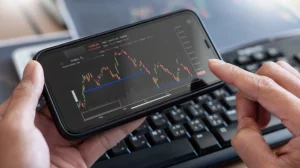The Timeless Lure of Gold
Gold has always held a special place in the hearts of investors, a symbol of wealth, power, and stability throughout the ages. From the glittering treasures of ancient civilizations to the sophisticated investment instruments of today’s markets, gold has consistently held a unique allure. In contemporary times, it’s not just the physical beauty of this precious metal that attracts investors, but the promise of a safe harbor in turbulent economic waters. As currencies fluctuate and stock markets waver, gold stands as a steadfast bastion of value, offering a reassuring counterpoint to the uncertainties of modern finance.
Gold in the Modern Investor’s Portfolio
Diversification is the cornerstone of a sound investment strategy, and gold plays a pivotal role in achieving this. As an asset that often moves inversely to stock markets and currencies, gold brings balance and stability to investment portfolios. Its unique properties, global acceptance, and historical performance make it a valuable hedge against inflation and economic downturns, a role it has played effectively throughout history.
Forms of Gold Investment
Investors today have several options for holding gold, each with its benefits and considerations.
1. Physical Gold: Physical gold, such as coins and bars, remains a popular choice for its tangible nature and direct intrinsic value. Holding physical gold allows investors to have a tangible asset that can be stored securely.
2. Gold Stocks and ETFs: Gold stocks and exchange-traded funds (ETFs) offer a more accessible means to invest in gold’s value without the logistical challenges of storing physical gold. These investments provide exposure to the performance of gold mining companies and the underlying price of gold.
3. Digital Gold: The digital age has brought forth a new way to invest in gold through blockchain-based assets and online trading platforms. Digital gold offers ease of transaction and storage, appealing to a new generation of investors.
Comparison of Gold Investment Forms
| Investment Form | Description | Pros | Cons | Considerations |
|---|---|---|---|---|
| Physical Gold (Bullion, Coins) | Direct ownership of physical gold pieces. | – Tangible asset | – Requires storage and insurance | – Security of storage |
| Gold Stocks (Mining Companies) | Stocks of companies that mine or deal in gold. | – Higher potential returns | – Subject to business risks – Can be volatile | – Company’s performance – Mining industry risks Market factors |
| Gold ETFs & Mutual Funds | Funds that invest in gold or gold-related assets. | – Convenient to own – Trades like a stock Diversifies risk | – Management fees – Potential tracking errors | – Fund’s performance – Expense ratios – Underlying assets and strategy |
| Digital Gold | Ownership of gold in digital form, often through online platforms or cryptocurrencies. | – Easy transaction – No physical storage – Small investment possible | – Reliance on technology – Security risks – Can be complex | – Platform’s credibility – Transaction and storage fees – Regulatory environment |
Market Dynamics and Gold
Gold’s value is not static; it responds to a variety of global economic forces. Historical trends show that gold’s price tends to rise in times of economic distress or high inflation. Understanding these dynamics is crucial for investors looking to leverage gold as a safe haven or diversifying element in their portfolios.
Contemporary Strategies in Gold Investment
In recent years, particularly post-pandemic, gold’s role in investment portfolios has gained renewed attention amidst global economic uncertainties and inflation concerns. For instance, during the initial market downturns of the COVID-19 pandemic, gold prices surged, reflecting its status as a safe haven during times of crisis. As of the latest market analysis, gold continues to perform with a resilience that underscores its historical role in protecting wealth against currency devaluation and economic downturns.
Utilizing Gold in Your Portfolio
For an investor looking to incorporate gold into a diversified portfolio, consider a hypothetical strategy where gold represents 10-20% of the total portfolio value. This allocation might increase in more conservative strategies or during times of heightened economic uncertainty, providing a stabilizing effect against market volatility. Conversely, in more aggressive or growth-focused strategies, gold might play a more dynamic role through gold ETFs or mining stocks, capitalizing on market movements to generate returns while still providing a measure of risk mitigation. By staying attuned to current economic indicators and leveraging gold’s unique properties, investors can strategically use gold to enhance the resilience and performance of their investment portfolios.
The Psychological Dimension
Investors flock to gold not just for its financial merits but for its psychological assurance. In times of market volatility or geopolitical tension, gold is often perceived as a steadfast safeguard, a sentiment rooted deeply in its historical role as a stable store of value.
Technological Advancements in Gold Investment
The digital age has transformed how investors access gold. From blockchain-based assets to online trading platforms, technology offers new ways to invest in gold, broadening its appeal and accessibility. However, investors must navigate these options carefully, considering security, regulatory, and practical aspects.
Challenges and Considerations
Investing in gold is not without its challenges. Physical gold requires secure storage and insurance, which can add to the cost. Gold stocks and ETFs bring different risks related to market fluctuations and management decisions. Understanding these factors is crucial for any gold investor.
Crafting a Golden Future
Integrating gold into your investment portfolio should be a considered decision, guided by careful analysis and a clear understanding of your financial goals. As global markets evolve and new investment technologies emerge, gold’s fundamental appeal as a source of stability and value is likely to continue, offering a shining beacon in the complex world of investment. Remember, the key to success lies in diversification, risk management, and staying informed about the ever-changing dynamics of the gold market. So, whether you choose to hold physical gold, invest in gold-related securities, or explore the world of digital gold, may your portfolio shine bright with the golden touch.











